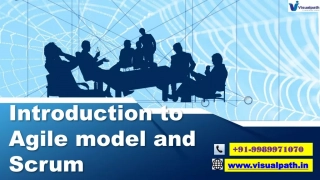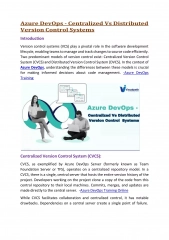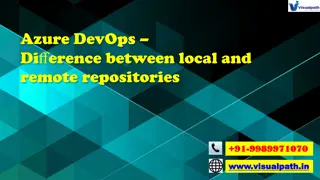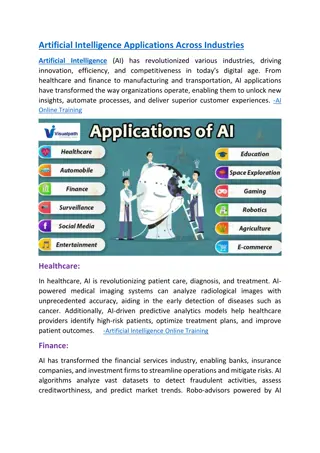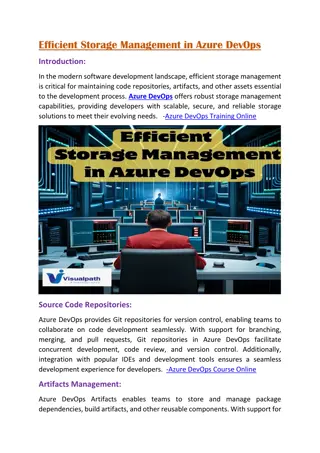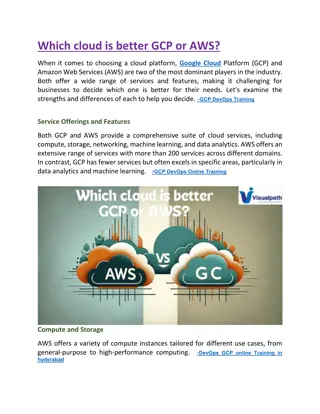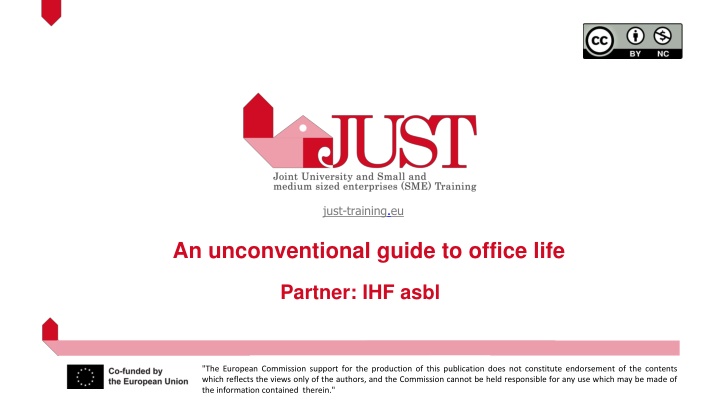
Unconventional Guide to Office Life: Communication, Hierarchies, and Rules
Explore an unconventional guide to office life covering communication flow, organizational hierarchies' pros and cons, and common office rules. Understand the role of individuals in an organization, hierarchal structures, and more. This comprehensive module provides insights to enhance your understanding of office dynamics and improve your workplace interactions.
Uploaded on | 4 Views
Download Presentation

Please find below an Image/Link to download the presentation.
The content on the website is provided AS IS for your information and personal use only. It may not be sold, licensed, or shared on other websites without obtaining consent from the author. If you encounter any issues during the download, it is possible that the publisher has removed the file from their server.
You are allowed to download the files provided on this website for personal or commercial use, subject to the condition that they are used lawfully. All files are the property of their respective owners.
The content on the website is provided AS IS for your information and personal use only. It may not be sold, licensed, or shared on other websites without obtaining consent from the author.
E N D
Presentation Transcript
just-training.eu An unconventional guide to office life Partner: IHF asbl "The European Commission support for the production of this publication does not constitute endorsement of the contents which reflects the views only of the authors, and the Commission cannot be held responsible for any use which may be made of the information contained therein."
Learning outcomes At the end of this module, you will: Better understand how the communication and Better understand how the communication and exchange of inputs flow within an exchange of inputs flow within an organisation organisation Understand the pros and cons of each of the most typical Understand the pros and cons of each of the most typical business hierarchies business hierarchies "The European Commission support for the production of this publication does not constitute endorsement of the contents which reflects the views only of the authors, and the Commission cannot be held responsible for any use which may be made of the information contained therein."
Index Valuing (and recognizing) your role in an organisation An introduction to organisational hierarchies Why such kind of hierarchies exists: pros & cons Shaping your sixth sense Understanding and decoding common non-written office rules "The European Commission support for the production of this publication does not constitute endorsement of the contents which reflects the views only of the authors, and the Commission cannot be held responsible for any use which may be made of the information contained therein."
1. Valuing (and recognising) your role in an organisation An introduction into organizational hierarchies The hierarchal structure of organizations provides insights into how: 1. The information flows within the organisation (i.e., the decision-making process) 2. The perimeter of responsibility/roles of each of the given person involved Understanding the hierarchal structure of the organisation is of great importance for the new employees as it helps him/her better understand how the chain of command works and who are the people (and functions) to which he/she responses. Managerial literature and practice offer seven prototype models of hierarchal frameworks. Please note that some of these frameworks can co-exist within the same organisation, depending on, for instance, the size of the company, number of employees, markets covered and diversification of services/products provided, and overall, the general complexity of the organisational chart ! "The European Commission support for the production of this publication does not constitute endorsement of the contents which reflects the views only of the authors, and the Commission cannot be held responsible for any use which may be made of the information contained therein."
Pyramidal Org. Structure Board of directors Typical of public organisations, the pyramidal org. structure is the most common form of hierarchy that you will experience in your professional career. CEO Advisory board Staff director Network director The chain of command is very much streamlined: inputs come from the above, and the lower the level, the lower the responsibilities, the lower the decision-making faculty. Finance director HR Logistics director IT director director People at the officer level perform tasks and activities that pertain to their specific area of interest only (i.e., finance) and respond to their director exclusively. Officer Officer Officer Officer Officer Officer Officer Officer Officer Officer Officer Officer Officer Officer Officer Officer Illustrative example "The European Commission support for the production of this publication does not constitute endorsement of the contents which reflects the views only of the authors, and the Commission cannot be held responsible for any use which may be made of the information contained therein."
Functional Org. Structure The functional org. structure works similar to the pyramidal framework. CEO Indeed, most of times, pyramid structures are further break down into functional arrangements so as to favor a more granular visualization of the chain of command and the people in charge of each of the given role at any given layer. Staff director Finance director Logistics director HR director IT director Security Manager Help desk Manager Cloud architect UX Manager The assumption is the same: people with higher level of seniority occupy top positions and organize their staff based on specific competences, skills and expertise Security officer Cloud programmer Web designed Technician Data-breach specialist Cloud-based UX technician Programmer Analyst Illustrative example "The European Commission support for the production of this publication does not constitute endorsement of the contents which reflects the views only of the authors, and the Commission cannot be held responsible for any use which may be made of the information contained therein."
Horizontal / Flat Org. Structure The horizontal/flat chart is quite common in small organisations or start-up-like companies that, by nature, can afford fewer layers between employees and upper management. CEO / Founder Marketing Specialist Community Engagement Sales Chief Officer PR Director An internal organisation is also quite often established among the professional firms ecosystem (i.e., lawyers, accountants, architects, etc.) with limited internal diversification of competences, expertise and responsibilities. Communication specialist Analyst Officer Technician Communication specialist Analyst Officer Technician In general, this type of structure works best when the firm/organisation is highly specialised on a limited number of products/services hence there is no need to establish further departments. Analyst Technician Illustrative example "The European Commission support for the production of this publication does not constitute endorsement of the contents which reflects the views only of the authors, and the Commission cannot be held responsible for any use which may be made of the information contained therein."
Divisional Org. Structure Slightly more complex compared to the others, the divisional org. structure takes into consideration the company s breakdown into its fundamental divisions, each of which operates like a firm within the firm . CEO / Founder Finance & Accounting Director Marketing Director Legal Advisory Director Each division represents a specific strand of the many businesses one organisation might be involved in. Consumer Services Partner Sr Marketing Manager Sales Director This structure is typical of medium-large consulting companies and other businesses operating at the same time in more than one field. Senior Associate Senior Associate Customer Care Officer Sales Analyst Junior Associate Customer Care Officer Sales Analyst It is common that each division has its own marketing, accounting, IT, HR, etc., executive teams so as to favour great autonomy and self-dependence. Illustrative example "The European Commission support for the production of this publication does not constitute endorsement of the contents which reflects the views only of the authors, and the Commission cannot be held responsible for any use which may be made of the information contained therein."
Divisional Org. Structure: few variants Geo-based org. structure Product-based org. structure Market-based org. structure The divisions are separated based on the geographic markets served by the firm The divisions are separated based on the different product/service line offered by the firm The divisions are separated based on the different industries/markets occupied by the firm or the customers served Examples Division 1: North-America Division 2: South-Europe Division 3: Balkans Examples Division 1: gluten-free Division 2: vegan Division 3: bio Examples Division 1: Coca-Cola Division 2: Fanta Division 3: Sprite "The European Commission support for the production of this publication does not constitute endorsement of the contents which reflects the views only of the authors, and the Commission cannot be held responsible for any use which may be made of the information contained therein."
Matrix Org. Structure A matrix organizational structure comes into place in very specific circumstances, and it is usually adopted to show how cross-functional team collaborate to carry out project that are limited in time. General Manager Software development chief officer Sales and Marketing Manager Project Manager Finance Director Engineering Director Finance team member Engineer team member In this case, people will find themselves responding to other teams and other departments that are not, as per traditional organizational chart, responsible for their work and delivery. IT Marketing member Project 1 member Finance team member Engineer team member IT Marketing member Project 2 member Matrix structures are fairly more challenging to manage due to the higher complexity that comes with managing such diverse cohort of expertise, know how, expertise and nonetheless, expectations, work attitudes and experience. Finance team member Engineer team member IT Marketing member Project 3 member Illustrative example "The European Commission support for the production of this publication does not constitute endorsement of the contents which reflects the views only of the authors, and the Commission cannot be held responsible for any use which may be made of the information contained therein."
Team-based Org. Structure Again, very common in a small organisation (i.e., star-up) that provides for a narrow-specialized offer. General manager / Founder As the name implies, the team-based organisational structure breaks down the organisations in teams, more or less cross-functional and diverse in the sense of competences involved Team Leader 1 Team Leader 2 Team Leader 3 Team-based structures are meant to streamline operations, flatten the hierarchies within the organisation and give employees more control over the tasks/activities they are responsible for Member 1 Member 1 Member 1 Member 2 Member2 Member 2 Illustrative example "The European Commission support for the production of this publication does not constitute endorsement of the contents which reflects the views only of the authors, and the Commission cannot be held responsible for any use which may be made of the information contained therein."
Network Org. Structure Without any doubt, the most complex framework applied to a firm structure. FRANCE ROMANIA Legal Very trendy and in vogue among large multinational organisations, the network organizational structure implies the very reframing of the hierarchy concept as normally understood and conceived. Production Assembly GERMANY The network structure fragments the organisation into a macro-cluster of functions more or less dependent on one another. Each cluster can be organised following one of the many frameworks analysed already or a hub itself of a further sub-network. Finance Administration ITALY Manufacturing Illustrative example "The European Commission support for the production of this publication does not constitute endorsement of the contents which reflects the views only of the authors, and the Commission cannot be held responsible for any use which may be made of the information contained therein."
1. Valuing (and recognising) your role in an organisation Why such kind of hierarchies exists: pros & cons In the next section, we will try to go through common pros and cons recognised both by literature and practice associated with each of the previous frameworks. This will help you better understand: 1. What might be common and practical implications for you 2. What your place is 3. What can you do to disrupt the disruptions 4. What are the basic rules of the game you re participating in "The European Commission support for the production of this publication does not constitute endorsement of the contents which reflects the views only of the authors, and the Commission cannot be held responsible for any use which may be made of the information contained therein."
Pros & cons of the Pyramidal Org. Structure PROS CONS Clear decision-making flow Isolation from other departments and sense of alienation from the whole value chain Perfectly displayed layers of authority and responsibility High level of bureaucracy with lower margin of autonomy in decision making Well-intuitive career path ahead of the employee Overall rigidity and less flexibility in the execution and performance of tasks Specialization and diversification of roles (i.e., less fragmentation and dispersion of efforts) High fragmentation in communication from strategy to execution with larger margin of errors and misinterpretations Well-identifiable chain of command and location of control in case of support is needed "The European Commission support for the production of this publication does not constitute endorsement of the contents which reflects the views only of the authors, and the Commission cannot be held responsible for any use which may be made of the information contained therein."
Pros & cons of the Functional Org. Structure PROS CONS Greater specialisation of employees Risk of too high self-isolation of the given function and loss of systemic focus Higher sense of ownership for the outputs associated with that given function Hampering cross-functional dialogues with negative impacts on knowledge flow Easily replicable at all levels Overall rigidity and risk of loss of locus of control/understating of the sub-functions within the same technical field Sense of comrade & discipline More robust and reliable sense of self-autonomy Higher fragmentation at the horizontal dimension Less dispersion of energies and efforts within the same functions "The European Commission support for the production of this publication does not constitute endorsement of the contents which reflects the views only of the authors, and the Commission cannot be held responsible for any use which may be made of the information contained therein."
Pros & cons of the Horizontal / Flat Org. Structure PROS CONS Greater opportunities for knowledge exchange Higher risk of entropy due to the lack of a centralised locus of control (or a well-identified supervisor to which to report) Quicker and leaner information flow More comprehensive awareness of the function of the business Fewer opportunities for specialisation Greater risk of disruptions impacting the whole business due to the inefficiency/ineffectiveness of a specific function Solid and robust understating of the overall value chain and how the inputs from each of the functions contribute to the generated value for the business and the people involved Sustainable only for small companies and relatively limited fields of application overall Higher sense of ownership "The European Commission support for the production of this publication does not constitute endorsement of the contents which reflects the views only of the authors, and the Commission cannot be held responsible for any use which may be made of the information contained therein."
Pros & cons of the Divisional Org. Structure PROS CONS Supports the large organisation in remaining relatively flexible. Helps top management in decentralising the chain of command and containing disruptions without affecting the whole organisation High risk of entropy within the division and headquarter High absorption of financial and economic resources that cannot be shared among divisions Promotes independence and a sense of entrepreneurial attitude at all levels High risk of competition between divisions (i.e., competition for markets niches, competition for internal resources, etc.). Diversifies the risk of profitability and the range of industries/markets covered by the firm Guarantees for quicker and more efficient business responsiveness to market changes "The European Commission support for the production of this publication does not constitute endorsement of the contents which reflects the views only of the authors, and the Commission cannot be held responsible for any use which may be made of the information contained therein."
Pros & cons of the Matrix Org. Structure PROS CONS Greater dynamism and opportunities for further exchange of knowledge Risk of conflicts between locus of control due to different cultural and professional approaches to project management and the final outputs/outcomes expected by the project Higher participation of fields experts and trans- sectorial experience to value generation Turnover in staffing, with consequent slow-downs of the workflow for the other functions even if not necessarily interested in the staffing dynamics Diversification of capacities, know-how and expertise Greater opportunities for a talent-based approach to staffing and recruitment Susceptible to changes more than any other framework due to its temporary nature and highly dependent on the given project Diversification of risk and locus of control for a more balanced approach to quality assurance "The European Commission support for the production of this publication does not constitute endorsement of the contents which reflects the views only of the authors, and the Commission cannot be held responsible for any use which may be made of the information contained therein."
Pros & cons of the Team-based Org. Structure PROS CONS Greater knowledge exchange opportunities Very challenging to sustain whenever differences in work approaches arise (very likely nonetheless) Higher know-how and expertise sharing Reduced clarity of the chain of command and decision-making flow overall Diversification of skills and competences of employees In general, not sustainable for companies highly diversified in the products/services provided, and markets/industries covered Promotes later career opportunities Increased responsiveness of the whole organizations to any given change might be needed Higher risk of entropy Streamlining of communication "The European Commission support for the production of this publication does not constitute endorsement of the contents which reflects the views only of the authors, and the Commission cannot be held responsible for any use which may be made of the information contained therein."
Pros & cons of the Network Org. Structure PROS CONS Helps large organisations better visualise the complex nature of their structure Fairly complex to manage and keep under control, specifically when a large portion of the value generation process is decentralised Sustain employees and stakeholders in better understating the locus of control, workflow and the group of people behind each stage of the value generation process Greater difficulties for lower-level employees in understating the source of certain directives / who s really responsible for certain issues and concerns "The European Commission support for the production of this publication does not constitute endorsement of the contents which reflects the views only of the authors, and the Commission cannot be held responsible for any use which may be made of the information contained therein."
2. Shaping your sixth sense Understanding and decoding common non-written office rules Far from common social media propaganda, offices are very complex social ecosystems at times very difficult to navigate through. There are indeed numerous unwritten rules that you familiarise yourself with only when you find yourself in certain scenarios. In the next few slides, you will be introduced to a couple of life buoys that for sure will help you in preventing unpleasant scenarios These relate to: 1. Communication 2. Common sense "The European Commission support for the production of this publication does not constitute endorsement of the contents which reflects the views only of the authors, and the Commission cannot be held responsible for any use which may be made of the information contained therein."
2. Shaping your sixth sense About Communication If something is not clear, make it clear Wait for your turn Do not be afraid to ask questions: be sure that all the information are well-understood from your side Are you sure that what you are about to say provides for any contribution to the discussion and is worth anybody else attention? First thing first Any expected output from your side that is the input of somebody else s workflow must be your priority Make a step back and do the math Are you sure that what you are about to say makes sense? Be straightforward Do not waste your time for the sake of buying time: take action Be concise and comprehensive There is only a limited amount of information that our brains can process at any given time "The European Commission support for the production of this publication does not constitute endorsement of the contents which reflects the views only of the authors, and the Commission cannot be held responsible for any use which may be made of the information contained therein."
2. Shaping your sixth sense About Common sense Never commit to what you cannot guarantee in time and in quality People remain impressed by the quality of your work, not necessarily the amount even more so if this comes at the costs of the previous Observe and keep a record of what made an impression on you ..for the worst or for the better Play the game by the book kind of Make sure to perform the task as per the guidelines assignment, but do not be afraid to experiment with suitable alternative ways of doing things (if they contribute to generating value) No superheroes allowed When in difficulty, just say it Do not over-complicate things Find a way to keep things simple & smart Do not force fake positivity on yourself There is nothing worse and more irritating than fake and forced behaviours "The European Commission support for the production of this publication does not constitute endorsement of the contents which reflects the views only of the authors, and the Commission cannot be held responsible for any use which may be made of the information contained therein."
Summing up 7 common types of organizational hierarchies Each of which with specific pros and cons. Hacks for common sense and Communication Basic principles to make your life a bit easier "The European Commission support for the production of this publication does not constitute endorsement of the contents which reflects the views only of the authors, and the Commission cannot be held responsible for any use which may be made of the information contained therein."
just-training.eu Thank you! "The European Commission support for the production of this publication does not constitute endorsement of the contents which reflects the views only of the authors, and the Commission cannot be held responsible for any use which may be made of the information contained therein."



